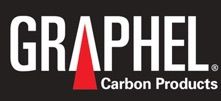Increasing Productivity in EDM Machining

Much attention has been focused on increasing productivity in EDM machining operations. Electrical discharge machining has undergone rapid improvements in capability, economical operation, speed and flexibility. New applications are continually emerging as shops discover the technological advantages becoming readily available for this processes.
Due to major advances in speed, geometric complexity, accuracy, ease of use and customer support, EDM has solidified its dominance in tool-making and is increasingly being applied to parts production.
EDM is no longer “non-conventional” or “non-standard” machining. In fact, EDM is now the fourth most popular machining process, selling more than all other processes except milling, turning and grinding, with EDM sales increasing from about 0.5 percent of the 1960 machine tool market to about 6 percent of the 2014 market.
So how can a shop increase its productivity with what has become a standard technology? I believe by improving upon the technology itself.
Accuracy has improved from about 0.001 inch for the first electrodes to about 0.00005 inch on electrodes produced today. Beginning in the mid-1980s, the operator skill needed to achieve 0.0002 or 0.0001 inch accuracy came down dramatically. Developments are responsible for this improved accuracy with less effort. The new technology assures that cuts follow programmed geometry very accurately. Today’s technology is three to five times as accurate.
The biggest advantage for most applications has been the improvement in nominal cutting speed, that is, the cutting speed obtainable under ideal conditions. Speed increased from about 1 square inch per hour in the early 1970s to approximately 30 square inches per hour in the mid-1990s. The reasons for the speed increases are primarily the technology that allows optimization of settings. As the speed increased, the number of jobs that could be cut per hour or per day increased proportionately.
Ease of use of the machines has both improved economical operation and allowed shops to spread fewer skilled workers over more machines. Adaptive control systems automatically adjust systems as needed. A typical system allows the operator to do all programming at a personal computer and simply download the information to the machine. This automation eliminates the need for the operator to adjust these variables when cutting into parts or sections of varying thickness.
So, how can we improve on this already improved technology? I believe by increasing the complexity of the electrode. Most electrodes are manufactured to burn only one cut at a time. Electrodes are manufactured to customer specifications usually to be used as part of a series of burns to complete the task. A lot of the time though, our customer’s needs are so complex that their engineers aren’t sure how to get what they need as far as complex geometry and even more complex hardware goes. This is where my team of very experienced engineer’s comes into play.
Between myself and two engineers, we have over 60 years EDMing and graphite electrode manufacturing experience. It is now the “norm” for our team to either go to our customer’s facility or have them come to our facility months ahead of a project – to collaborate while they are still in their design phase. We generally work alongside our customer’s design team in order to assure that they get the exact burn that they need from the fewest electrodes possible.
By configuring the electrode to perform multiple burns accomplishes a couple of goals for the customer:
• Less burning time for the customer, less labor
• Reduced material cost in the form of the electrodes
• Cleaner cuts
Many electrodes are becoming more complex in terms of geometry, length to diameter ratio and material composition. Of course all manufacturers do not have the engineering capability nor the manufacturing talent to pull off a complex electrode. But, I believe the future of the EDMing process will have to accommodate complex electrodes. Graphel Corporation is meeting this challenge head on be investing heavily not only in people, but in the latest CNC machining technology.
Nathan Buchanan
Manufacturing Engineering Manager
Graphel Carbon Products
